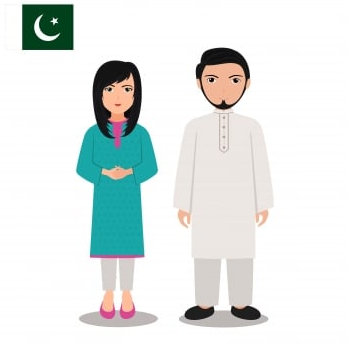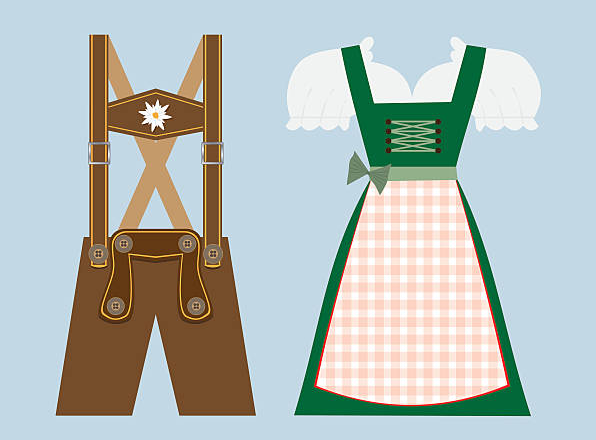Bahrain, a vibrant and diverse country in the Middle East, is known for its rich cultural heritage and traditions. One significant aspect of Bahraini culture is the Bahrain National Dress, which includes the abaya for women and the thobe for men. In this article, we will delve into the history, design, cultural significance, and modern adaptations of these iconic garments, highlighting their importance in preserving Bahraini cultural identity.
Bahrain, a country with a deep-rooted history, has a distinct national dress that reflects its cultural heritage. The traditional clothing worn by Bahrainis not only represents their identity but also serves as a symbol of their heritage and traditions. The abaya and thobe, worn by women and men, respectively, are the epitome of Bahraini national dress.
History and Significance of Bahrain National Dress
The history of the abaya and thobe can be traced back several centuries. These garments have evolved over time, influenced by regional and cultural factors. The abaya, a flowing black cloak worn by women, has its origins in the Arabian Peninsula. It was traditionally worn for modesty and protection from the sun’s harsh rays.
On the other hand, the thobe, a loose-fitting ankle-length robe worn by men, has its roots in Bedouin culture. Originally, the thobe was made from simple, practical fabrics suited for the desert environment. Over time, it has transformed into a garment that showcases traditional craftsmanship and cultural pride.
Abaya: Traditional Women’s Dress
Origins and Evolution
The abaya has a fascinating history that dates back to ancient times. It was initially a garment worn by both men and women as a protective outer layer. However, over the years, it became exclusively associated with women’s fashion. Today, the abaya is a symbol of elegance, modesty, and cultural heritage.
Design and Features
The abaya is typically made of lightweight fabric, such as chiffon, silk, or crepe. It is designed to be loose-fitting and covers the entire body, except for the face and hands. Modern abayas often feature intricate embroidery, embellishments, and various styles, allowing women to express their personal taste while adhering to cultural norms.
Cultural Significance
In Bahraini society, the abaya holds great cultural significance. It not only serves as a traditional dress but also represents a woman’s adherence to Islamic values and her commitment to modesty. The abaya is a symbol of cultural identity, pride, and elegance, and it is often worn on special occasions, religious events, and weddings.
Thobe: Traditional Men’s Dress
Origins and Evolution
Similar to the abaya, the thobe has a long history that spans generations. It originated from the practical needs of Bedouin tribes in the Arabian Peninsula. The original thobe was a simple, loose-fitting garment designed to protect individuals from the intense desert heat.
Design and Features
The thobe is typically made from lightweight fabrics, such as cotton or linen, to ensure comfort in the desert environment. It is characterized by its ankle-length cut, long sleeves, and a collarless design. Traditional thobes are often white, reflecting the cultural preference for light-colored clothing in hot climates. However, modern variations include a wide range of colors and intricate embroidery, allowing men to showcase their personal style while maintaining cultural traditions.
Cultural Significance
The thobe holds significant cultural value in Bahraini society. It symbolizes masculinity, dignity, and adherence to cultural norms. Men often wear the thobe during formal occasions, religious ceremonies, and important social events. It serves as a way to express pride in their heritage and display a sense of elegance and tradition.
Similarities and Differences
While the abaya and thobe are distinct in their design and purpose, they also share some similarities. Both garments prioritize modesty, with loose-fitting cuts that cover the body. They also represent cultural identity and are worn on special occasions. However, the key differences lie in their specific designs, colors, and the ways they are worn by men and women.
Modern Adaptations and Fashion Trends in Bahrain National Dress
In recent years, both the abaya and thobe have seen modern adaptations and innovative designs. Fashion designers in Bahrain have infused contemporary elements into these traditional garments, creating a fusion of tradition and modernity. The abaya now comes in various styles, including tailored cuts, vibrant colors, and unique embellishments, while still maintaining its modesty and elegance. Similarly, the thobe has evolved with the inclusion of different fabrics, patterns, and modern touches while preserving its cultural essence.
Role of Bahrain National Dress in Society
The national dress plays a crucial role in Bahraini society, beyond being a mere form of clothing. It serves as a symbol of national identity and unity, connecting people to their heritage and traditions. The abaya and thobe promote cultural cohesion, fostering a sense of belonging and pride among Bahrainis. They contribute to the preservation of cultural heritage, passing down traditions from one generation to another.
Importance of Preserving Cultural Identity
Preserving the cultural identity embodied by the abaya and thobe is of utmost importance in Bahrain. These garments are a testament to the country’s history, values, and traditions. By valuing and upholding the significance of national dress, Bahrainis ensure the continuity of their cultural legacy and contribute to a vibrant and diverse society.
Tourism and Bahrain National Dress
The unique and visually striking abaya and thobe have become attractions for tourists visiting Bahrain. Visitors have the opportunity to witness and appreciate the cultural significance of these garments through traditional performances, exhibitions, and cultural events. The popularity of cultural tourism has further highlighted the importance of preserving and promoting Bahraini national dress as a way to showcase the country’s rich heritage.
FAQs
1. Can men wear the abaya in Bahrain?
No, the abaya is exclusively worn by women in Bahrain.
2. Are there any specific colors associated with the abaya and thobe?
Traditionally, the abaya is black, while the thobe is white. However, modern variations include a wide range of colors for both garments.
3. Can non-Bahrainis wear the abaya or thobe?
While there are no restrictions, wearing the abaya or thobe as a non-Bahraini may be seen as cultural appreciation or participation in special events.
4. Are there any specific rules regarding the design of the abaya and thobe?
There are no strict rules regarding the design of the abaya and thobe. Traditional designs often feature simple cuts and minimal embellishments, but modern adaptations allow for more creativity and personalization.
5. How can one learn more about Bahraini national dress?
To learn more about Bahraini national dress, one can visit cultural museums, attend traditional events and festivals, or engage in guided tours that provide insights into Bahraini culture and heritage.
Conclusion
The abaya and thobe hold immense cultural significance in Bahrain, representing the country’s rich history, traditions, and values. These garments transcend mere clothing and serve as symbols of identity, unity, and cultural pride. By preserving and promoting the abaya and thobe, Bahrainis ensure the continuity of their cultural heritage, while also contributing to global fashion trends and cultural appreciation.
Incorporating the abaya and thobe into modern fashion and embracing their historical roots, Bahrain embraces both tradition and innovation, creating a harmonious blend of cultural identity and contemporary style.
References
- Al Khalifa, M. A. (2014). Cultural change in Bahrain through traditional costume and its relationship to heritage and national identity. Journal of Anthropological Research, 70(3), 437-459.
- Al-Mahroos, S. M. (2015). National costume in Bahrain: A socio-cultural analysis. Al-Abhath, 63, 21-38.
- Bahrain Tourism & Exhibitions Authority. (n.d.). Bahrain national costume. Retrieved from https://www.btea.bh/en/experiences/bahrain-national-costume/


